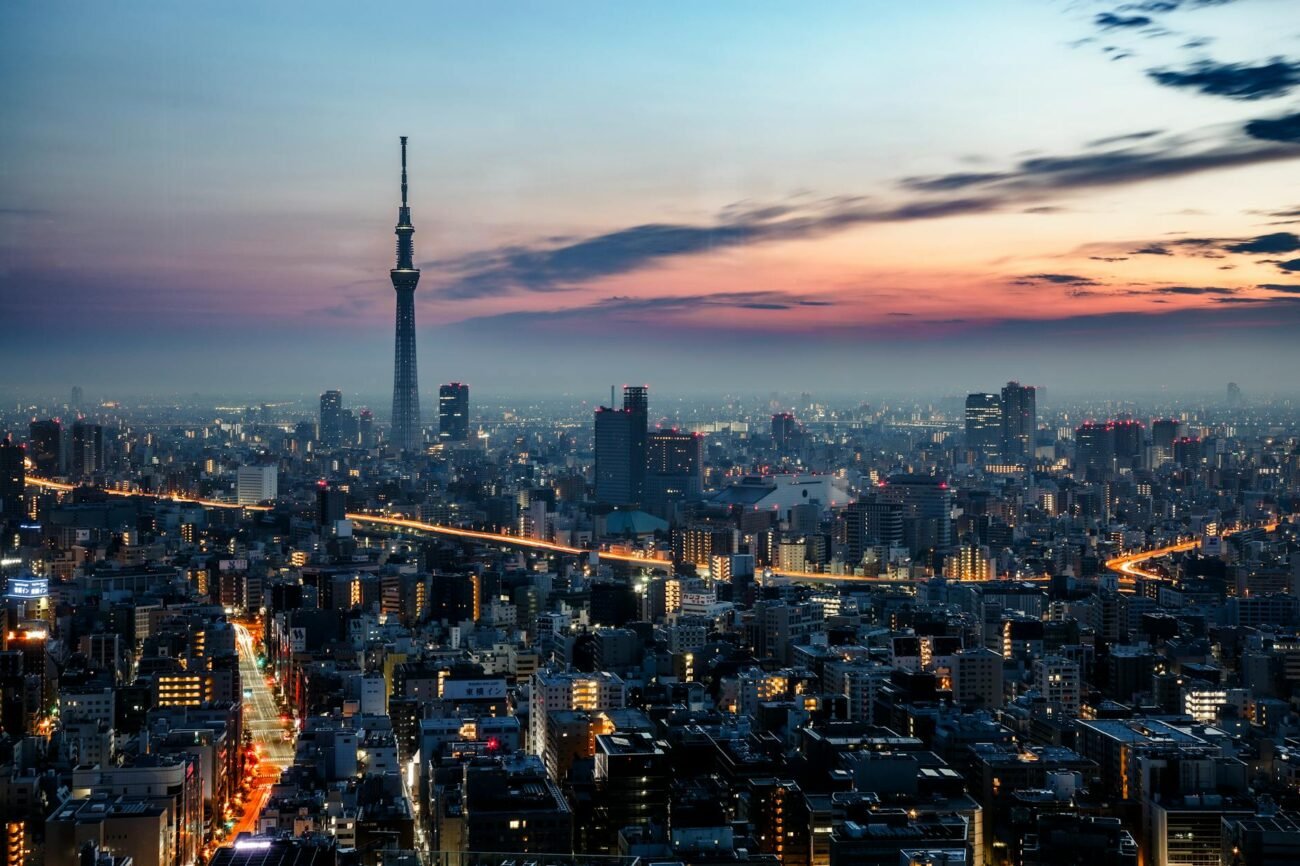Beyond Tokyo’s neon lights and Kyoto’s ancient temples lies a Japan rarely discovered by most travelers. While millions flock to Mount Fuji and the bustling streets of Osaka each year, a treasure trove of breathtaking landscapes and cultural wonders remains hidden in plain sight. From a village nestled inside an active volcano to an island where rabbits roam freely, Japan’s lesser-known destinations offer experiences that feel almost magical in their authenticity and beauty. 🗻✨
Have you ever dreamed of wandering through pristine UNESCO beech forests, relaxing in traditional hot springs in a quaint onsen village, or exploring Japan’s unexpected desert landscape? These experiences aren’t just possible they’re waiting for you in Japan’s secret corners. As of summer 2025, these hidden gems remain blissfully uncrowded, offering a glimpse into the true soul of Japan that most visitors never witness. Whether you’re seeking natural wonders like the volcanic Takachiho Gorge with its mythological significance or time-capsule villages like Ouchi-juku where the Edo period lives on, this guide will take you beyond the guidebooks to discover ten extraordinary places that showcase Japan’s remarkable diversity and depth.
Takachiho Gorge: Experience Volcanic Beauty and Mythology
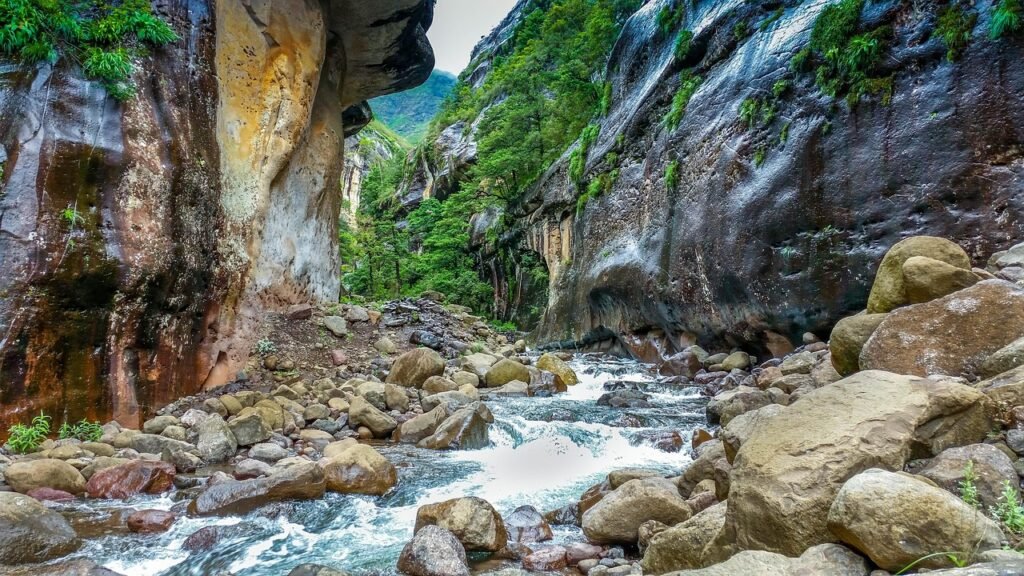
Nestled in Miyazaki Prefecture’s Takachiho Town, this spectacular gorge stands as one of Japan’s most breathtaking natural wonders yet remains relatively unknown to international travelers. Designated as a national Special Place of Scenic Beauty and Natural Monument, Takachiho Gorge offers visitors a perfect blend of awe-inspiring landscapes and deep cultural significance.
Stunning Basalt Cliffs and Gokase River Views
The gorge extends approximately 7 kilometers, featuring dramatic volcanic basalt cliffs that tower up to 100 meters high. What makes these formations particularly unique is their distinct columnar jointing pattern a geological phenomenon resulting from the cooling and solidification of lava from Mount Aso’s ancient eruptions. These hexagonal columns create a mesmerizing vertical striped effect along the cliff faces.
The Gokase River flows gracefully through the gorge’s depths, carving its way through the volcanic rock. This V-shaped structure, formed over thousands of years, represents the persistent power of water against stone. The gorge’s formation dates back to two major volcanic events approximately 120,000 and 90,000 years ago, with subsequent erosion by the river creating the dramatic landscape we see today.
Visitors can experience the stunning views from various vantage points along well-maintained walking paths and observation decks that provide different perspectives of the gorge throughout the seasons. For a truly immersive experience, renting a rowboat allows you to glide along the emerald waters of the Gokase River, gazing up at the towering cliffs from below while approaching the magnificent Manai Waterfall.
Connection to the Sun Goddess Amaterasu
What elevates Takachiho Gorge beyond mere geological wonder is its profound connection to Japanese mythology. This sacred site features prominently in Japan’s oldest historical records, the Kojiki and Nihon Shoki. According to these ancient texts, Takachiho is where Ninigi-no-Mikoto, grandson of the sun goddess Amaterasu, descended to Earth from the heavens.
The 17-meter Manai Waterfall, cascading dramatically between the basalt cliffs, is considered particularly sacred. Its waters are believed to have divine properties, creating a spiritual ambiance that has drawn visitors for centuries. This harmonious blend of natural beauty and mythological significance makes Takachiho Gorge a site of both environmental and cultural importance.
Local traditions further celebrate this mythological connection through performances like the Takachiho Yokagura ritual dances that reenact the legends associated with the area and showcase the deep integration of natural landscapes with Japan’s spiritual heritage.
Best Activities and Viewing Spots
For the ultimate Takachiho Gorge experience, consider these essential activities:
Rowboat Rental: Navigate the Gokase River on a traditional wooden boat, allowing for up-close views of the basalt cliffs and Manai Waterfall. This intimate perspective provides unparalleled photo opportunities and a sense of scale that can’t be appreciated from above.
Observation Decks: Several strategically placed viewing platforms offer stunning panoramas of the gorge. The main observation deck near the boat rental area provides the classic postcard view of the gorge and waterfall.
Walking Paths: Explore the well-maintained trails that wind along the upper edge of the gorge, offering different vantage points and perspectives of this natural wonder
Seasonal Visits: While beautiful year-round, each season transforms the gorge:
- Spring brings fresh greenery and moderate crowds
- Summer offers lush vegetation and ideal boating conditions
- Autumn transforms the surrounding forests with vibrant colors
- Winter provides a more serene experience with fewer visitors
- Culinary Experience: Don’t miss trying the local specialty Nagashi Somen. These flowing noodles are served in a unique way where diners catch them with chopsticks as they flow through bamboo chutes with fresh spring water.
For the best experience, arrive early in the morning to avoid crowds, especially during peak tourist seasons. Bringing appropriate footwear for walking and a camera to capture the breathtaking scenery is highly recommended.
Now that we’ve explored the volcanic beauty and mythological significance of Takachiho Gorge, let’s continue our journey through Japan’s hidden treasures by stepping back in time at Ouchi-juku, a perfectly preserved Edo Period post town that offers visitors a glimpse into Japan’s feudal past.
Ouchi-juku: Step Back into Edo Period Japan
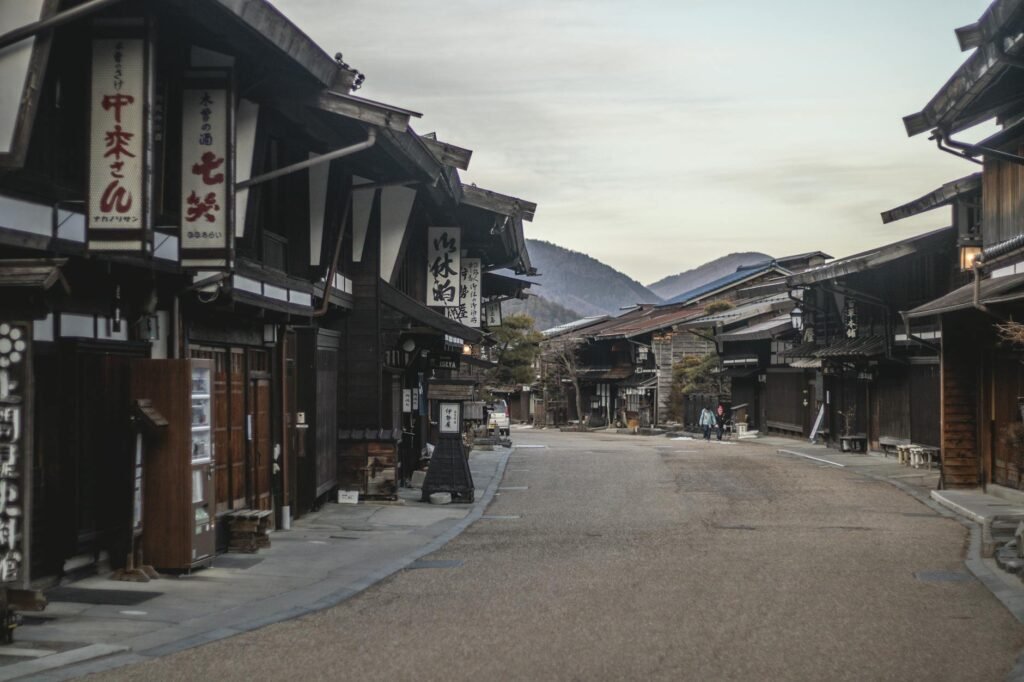
After experiencing the mythical landscapes and volcanic beauty of Takachiho Gorge, we journey northward to discover another hidden gem that transports visitors to Japan’s storied past. Nestled in the picturesque mountains of Fukushima Prefecture, Ouchi-juku offers an authentic glimpse into Edo period Japan that few international travelers ever discover.
This remarkably preserved post town once served as a crucial stopover along the Shimotsuke Kaido route, where feudal lords and merchants would rest during their journeys to Edo city (modern-day Tokyo). Today, Ouchi-juku stands as a living museum, allowing visitors to experience Japan as it was centuries ago making it one of the country’s most captivating off-the-beaten-path destinations.
Historic Thatched-Roof Architecture
What immediately captivates visitors to Ouchi-juku is the striking row of traditional thatched-roof houses lining its main street. These authentic structures have been meticulously preserved, earning the village recognition as an Important Preservation District for Groups of Traditional Buildings. Over 30 of these historic homes remain intact, their distinctive kayabuki (thatched roof) design standing as a testament to traditional Japanese craftsmanship.
The dedication to preservation in Ouchi-juku is remarkable, with specialized artisans employing centuries-old techniques to maintain these historical structures. The community’s commitment to sustainability has kept this architectural heritage alive, allowing visitors to step back in time as they wander the village streets.
The visual appeal of Ouchi-juku changes dramatically with the seasons, but many consider winter the most magical time to visit. When blanketed in snow, the thatched roofs create a mesmerizing scene straight from a historical painting offering photographers and culture enthusiasts an unforgettable Japanese landscape rarely seen by foreign visitors.
Traditional Cultural Experiences
Beyond its architectural splendor, Ouchi-juku offers immersive cultural experiences that connect visitors with Japan’s rich heritage. For those seeking deeper historical insights, the Ouchi-juku Townscape Exhibition Hall houses a fascinating collection of artifacts and tools from the Edo period, providing context to the village’s significance.
The town’s cultural calendar is punctuated by vibrant festivals that showcase local traditions. The Ouchi-juku Snow Festival in February transforms the village into a winter wonderland with illuminated snow sculptures and traditional performances. During summer, the Hange Mid-Summer Festival in July offers another perspective on rural Japanese celebrations with its distinctive customs and rituals.
Visitors can experience traditional Japanese hospitality by warming themselves at irori (sunken hearths) found in several establishments throughout the village. These gathering spots not only provided warmth to weary travelers centuries ago but continue to serve as social hubs where visitors can interact with locals and fellow travelers alike.
Must-Try Local Specialty: Negi-Soba
No visit to Ouchi-juku would be complete without sampling its signature culinary delight: negi-soba. This unique dish represents one of Japan’s most unusual dining experiences, where handmade buckwheat noodles are served with a distinctive twist instead of chopsticks, diners use a whole leek (negi) to slurp their noodles!
Misawa-ya is one of the establishments where visitors can enjoy this quirky culinary tradition. The leek not only serves as an eating utensil but also enhances the flavor of the soba as you eat. This playful approach to dining perfectly captures the charm and character of Ouchi-juku.
Another local specialty worth trying is char fish, traditionally roasted over open flames right in front of visitors. These simple yet flavorful dishes reflect the humble, resourceful spirit of Edo-period travelers and continue to delight modern visitors.
For those extending their stay in the area, nearby Yunokami Onsen offers relaxing hot springs where travelers can soak away their fatigue, just as Edo-period travelers might have done after a long journey along the Shimotsuke Kaido.
As we leave behind the historic charms of Ouchi-juku, our journey through Japan’s hidden gems continues northward to Shirakami Sanchi, where pristine UNESCO-protected beech forests await our exploration. The transition from human history to natural heritage will showcase yet another facet of Japan’s remarkable diversity beyond the typical tourist trail.
Shirakami Sanchi: Explore Japan’s Pristine UNESCO Beech Forests
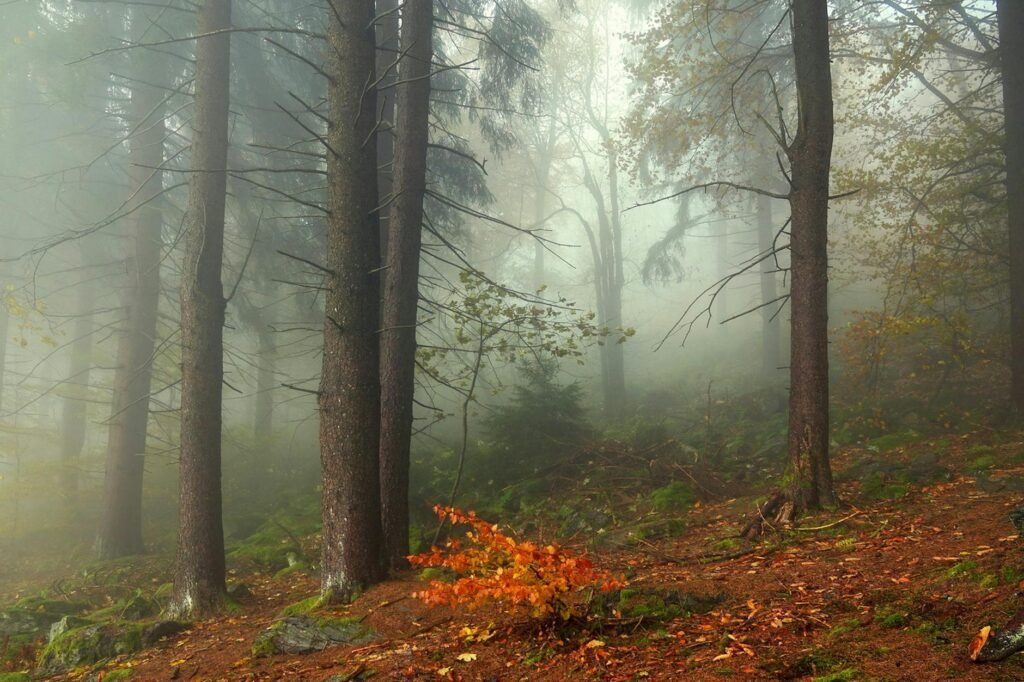
While Ouchi-juku offers a glimpse into Japan’s historical past, Shirakami Sanchi invites you to step into a natural world that has remained largely unchanged for thousands of years. Moving from man-made historical wonders to nature’s own masterpiece, this UNESCO World Heritage site spanning Aomori and Akita prefectures in northern Japan houses the largest virgin beech forest in East Asia.
Hiking Trails Through Ancient Forests
Shirakami Sanchi’s pristine wilderness features beech (Fagus) forests that have thrived in northern Japan for an astonishing 8,000 to 12,000 years. Unlike many forests in densely populated Japan, this area has remained largely undisturbed by human development, creating a truly unique ecological haven. The forest is dominated by Fagus crenata, an endemic species that creates a mesmerizing canopy above visitors.
For hikers seeking an authentic Japanese off-the-beaten-path experience, the network of trails through this ancient forest offers varying levels of difficulty. The most popular route leads to Anmon Falls, where you can experience the full majesty of these primeval woods. Before embarking on your journey, it’s essential to visit the Shirakami Sanchi Visitor Center, which provides crucial information about the forest ecosystem and assists with entry procedures for accessing the core protected areas.
The hiking experience here differs significantly from other Japanese destinations, as strict conservation measures mean minimal infrastructure development. Visitors must follow responsible hiking practices to preserve this wilderness, including staying on designated paths and carrying out all waste.
Spectacular Waterfall Discoveries
Hidden within the lush beech forests lie numerous waterfalls, with the three-tiered Anmon Falls being the crown jewel. These cascades, nestled between altitudes of 100 to 1,243 meters above sea level, create refreshing microenvironments within the forest. The falls provide not only spectacular photo opportunities but also showcase the pristine water systems that support the forest’s biodiversity.
ALSO READ: How to Travel Japan on a Shoestring Budget: 7 Money-Saving Tips
The journey to these waterfalls takes you through changing landscapes, offering glimpses of how the beech forest ecosystem has adapted to the cool-temperate climate along the Sea of Japan. The falls serve as natural markers along popular hiking routes, rewarding trekkers with breathtaking views after navigating the verdant forest paths.
Wildlife and Biodiversity Highlights
Shirakami Sanchi’s undisturbed ecosystem supports remarkable biodiversity. The forest floor is often covered with evergreen Sasa kurilensis (a type of bamboo grass), creating a multi-layered habitat that houses numerous rare species. Lucky visitors might spot the black woodpecker, an endangered species that requires old-growth forest environments for survival.
Other protected wildlife includes the Japanese serow (a goat-antelope) and the elusive Japanese black bear, both of which depend on this ancient forest for their continued existence. The non-fragmented nature of this 16,971-hectare habitat is crucial for preserving these species, as it allows for natural ecological processes to continue undisturbed.
The area’s biodiversity reflects historical climate changes, making it valuable for studies in terrestrial cool-temperate ecology. Management of the property involves various Japanese government ministries and local prefectures, resulting in stringent protections that prohibit timber production, species collection, and hunting of protected wildlife in designated zones.
As we leave behind the ancient beech forests of Shirakami Sanchi, our journey through Japan’s hidden gems takes an unexpected turn. From the lush greenery of this northern wilderness, we’ll next travel to a landscape so dramatically different you might think you’ve left Japan entirely the surprising Tottori Sand Dunes, where Japan reveals its unexpected desert landscape.
Tottori Sand Dunes: Japan’s Unexpected Desert Landscape
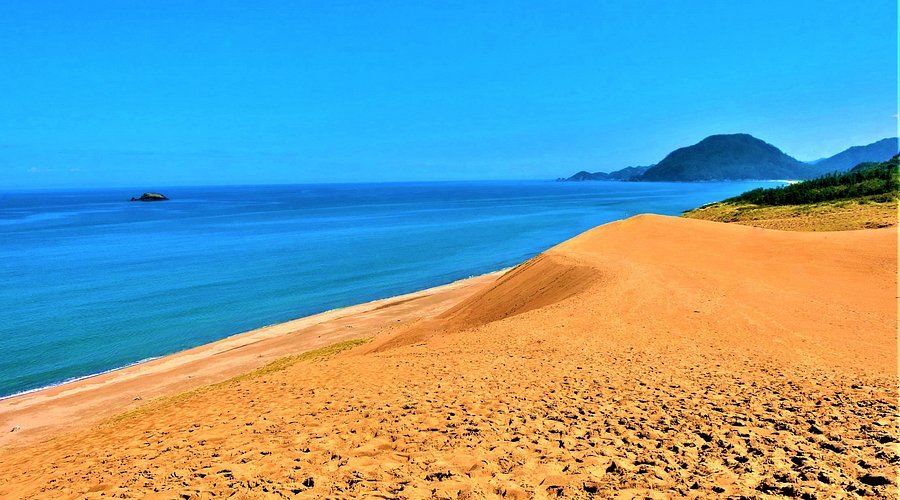
After exploring the lush UNESCO-protected beech forests of Shirakami Sanchi, you might be surprised to discover that Japan also offers a completely contrasting natural wonder. As we shift from dense greenery to sweeping sand vistas, prepare to be amazed by the Tottori Sand Dunes Japan’s very own desert landscape that challenges everything you thought you knew about this island nation.
Located in Tottori Prefecture, these magnificent dunes are the largest in Japan, stretching approximately 9 miles (14 km) long and nearly 1.5 miles (2.4 km) wide. As part of the UNESCO-recognized San’in Kaigan Geopark, the dunes represent a geological marvel that has been forming over 100,000 years through sediment deposits from the Chūgoku Mountains, all shaped by persistent coastal winds.
Sandboarding and Camel Riding Adventures
The Tottori Sand Dunes offer visitors unique desert-like experiences that seem completely out of place in Japan. The most famous section, known as the Hamasaka Dunes, spans an impressive 545 hectares on the eastern side of the Sendai River and provides the perfect setting for adventurous activities.
Sandboarding has become increasingly popular among thrill-seekers visiting the dunes. Similar to snowboarding but on sand, this activity allows you to glide down the steep slopes of the dunes, with some reaching heights of up to 40 meters. The bowl-shaped depressions, locally known as “suribachi,” create natural arenas perfect for this exhilarating sport.
For those seeking a more relaxed yet equally memorable experience, camel rides offer a surreal way to traverse this Japanese desert. As you sway atop these desert animals, you might momentarily forget you’re in Japan altogether the experience feels more like a journey through North African landscapes than anything you’d expect to find in the Land of the Rising Sun.
The Fascinating Sand Museum and Its Exhibits
Adjacent to the dunes is the remarkable Sand Museum, the world’s first museum dedicated to sand sculptures. This unique cultural institution showcases intricate and massive sculptures crafted by international artists using only sand and water from the Tottori dunes.
The museum features annually changing themed exhibitions that highlight different countries and cultures through the medium of sand art. These impressive sculptures demonstrate extraordinary craftsmanship and attention to detail, with some reaching several meters in height.
What makes these exhibits particularly special is their impermanence like the dunes themselves, which are constantly being reshaped by wind, the sculptures exist only for a limited time before being dismantled to make way for new creations. This transience adds a philosophical dimension to your visit, reminding us of the changing nature of all things.
Best Times to Visit for Perfect Photos
For photography enthusiasts, timing is everything when visiting the Tottori Sand Dunes. Early morning and late afternoon offer the most dramatic lighting conditions, when the low-angled sun creates striking shadows and highlights the unique wind-formed patterns in the sand.
Winter mornings sometimes reveal perfectly pristine dunes, as overnight winds smooth away all footprints, creating an untouched canvas. During this season, you might also witness the rare phenomenon of snow dusting the sand dunes a truly extraordinary sight that presents a stunning visual contrast.
Summer visits allow you to experience the seasonal “oasis” phenomenon, where groundwater emerges to create shallow pools among the dunes. These temporary water features reflect the sky and surrounding sand formations, offering exceptional photographic opportunities.
It’s worth noting that the dunes face ongoing erosion challenges due to post-World War II reforestation programs and coastal concrete barriers that were ironically implemented for preservation purposes. Additionally, unauthorized graffiti has become such a problem that protective ordinances were enacted in 2009 to preserve this natural wonder for future generations.
As we conclude our exploration of this unexpected Japanese desert landscape, we’ll next journey to Shodoshima, the charming Olive Island nestled in the Seto Inland Sea, where Mediterranean influences create yet another surprising facet of Japan’s hidden natural diversity.
Shodoshima: The Olive Island in the Seto Inland Sea
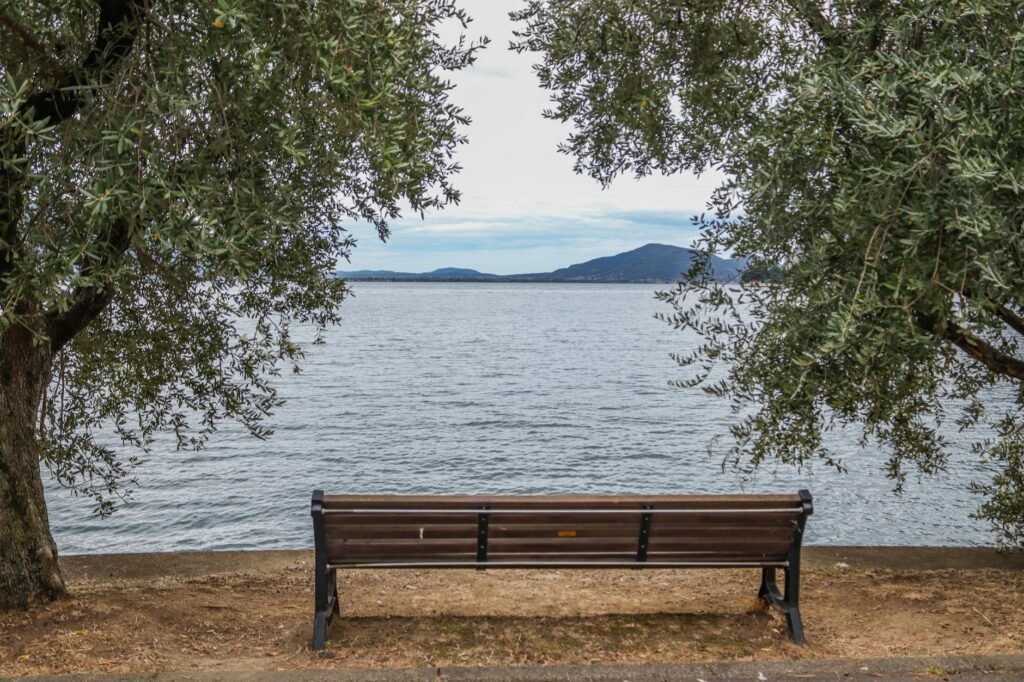
After experiencing the surprising desert landscape of Tottori Sand Dunes, another unexpected Japanese treasure awaits in the Seto Inland Sea. While most visitors to Japan focus on bustling cities and ancient temples, the island of Shōdoshima offers a completely different side of Japan that feels almost Mediterranean in character.
Located in the Seto Inland Sea and part of Kagawa Prefecture, Shōdoshima (which translates to “Island of Small Beans”) is Japan’s 23rd largest island, covering an area of 153.30 km² with a scenic 126-kilometer coastline. What makes this hidden gem truly special is how it combines Japanese tradition with unexpected Mediterranean influences, creating one of Japan’s most unique off-the-beaten-path destinations.
Mediterranean-like Olive Groves and Production
Shōdoshima’s claim to fame is its distinction as “Olive Island” the first place in Japan to successfully cultivate olives. The island’s climate and terrain proved ideal for olive cultivation, creating landscapes that might make you forget you’re in Japan altogether.
The Shōdoshima Olive Park stands as the centerpiece of the island’s olive heritage, drawing nearly 300,000 visitors annually as of 2023. Here, visitors can wander through picturesque olive groves reminiscent of Greece or Italy while learning about olive cultivation and production that has become central to the island’s identity.
The island’s connection to olive culture runs so deep that it has established a sister island relationship with Milos, Greece, further cementing its Mediterranean connection. Local mascots, Olive Shima-chan and friends, celebrate this unique heritage and help promote tourism to this distinctive destination.
Dramatic Kankakei Gorge Views
Beyond its olive groves, Shōdoshima offers spectacular natural beauty at the Kankakei Gorge. This dramatic landscape provides visitors with breathtaking views across the island and out to the Seto Inland Sea. The gorge stands in stark contrast to the gentle olive slopes, showcasing the island’s diverse natural environments within a relatively small area.
The island’s natural beauty extends to other scenic attractions including the narrow Dofuchi Strait and the unique Angel Road. Adding to the charm, Shōdoshima is home to wild monkeys that roam freely in parts of the island, offering wildlife encounters that many visitors don’t expect to find in Japan.
Contemporary Art at the Setouchi Triennale
Shōdoshima’s cultural significance extends beyond its natural beauty and agricultural heritage. The island plays a key role in the internationally acclaimed Setouchi Triennale, a contemporary art festival that transforms islands in the Seto Inland Sea into open-air galleries.
During the Triennale, Shōdoshima hosts numerous art installations that blend seamlessly with its picturesque landscapes and traditional settings. This fusion of nature, tradition, and contemporary art creates a unique cultural experience that draws art enthusiasts from around the world.
The island also has deep literary connections, most notably as the setting for Sakae Tsuboi’s antiwar novel “Twenty-Four Eyes,” which has been adapted into films and television specials. Film buffs might recognize the island from another unexpected connection – the Shōdoshima Olive Park features a recreation of the fictional bakery from “Kiki’s Delivery Service,” the beloved Studio Ghibli film.
For those seeking spiritual experiences, Shōdoshima offers a miniature version of the famous 88-temple Shikoku Pilgrimage, allowing visitors to experience this important cultural tradition in a more accessible format.
Now that we’ve explored the Mediterranean-inspired landscapes and cultural riches of Shōdoshima, our journey through Japan’s hidden gems continues to Okunoshima. This next destination presents a fascinating contrast a charming island populated by friendly rabbits that harbors a haunting wartime past. The juxtaposition between cute and concerning creates one of Japan’s most intriguing hidden destinations.
Okunoshima: The Charming Yet Haunting Rabbit Island
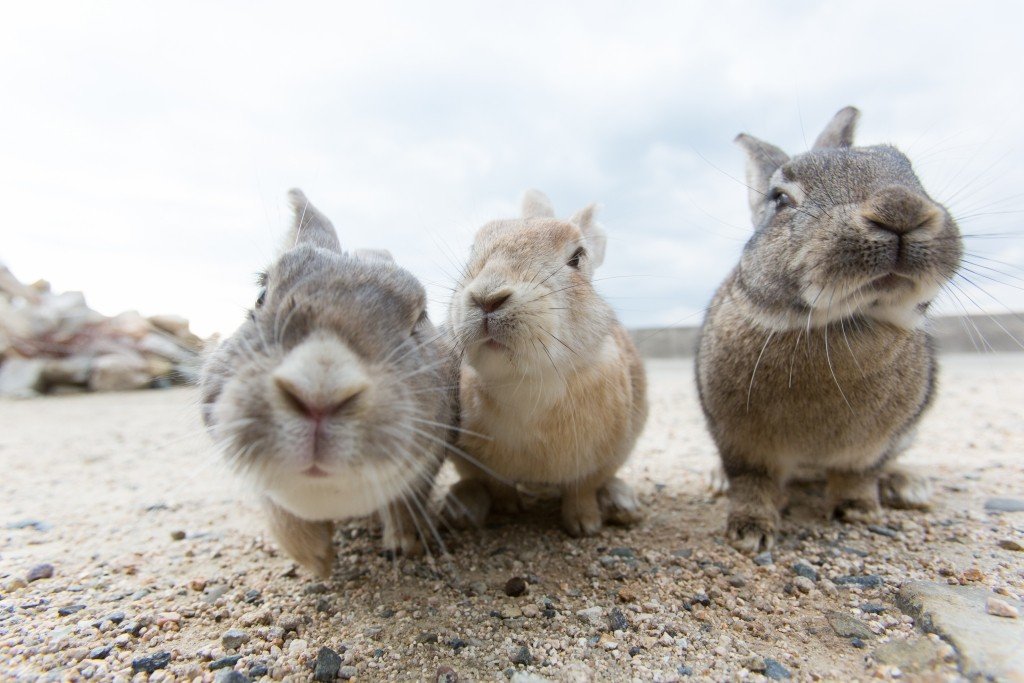
While Shodoshima offers visitors a Mediterranean feel with its olive groves and mild climate, our next hidden gem presents a completely different but equally fascinating experience. Just a short journey away in the Seto Inland Sea lies Okunoshima, a small island that perfectly embodies Japan’s ability to juxtapose the adorable with the sobering.
Interactions with friendly wild rabbits
Okunoshima, commonly known as “Rabbit Island,” has gained international attention for its population of free-ranging domestic rabbits that have made the island their home. Unlike typical wildlife, these feral rabbits are remarkably friendly and approachable. Visitors to the island can experience the unique joy of being surrounded by hundreds of fluffy bunnies that hop right up to greet you.
The origin of these rabbits remains a subject of debate. While local folklore suggests they were released by workers after World War II, experts including Professor Ellis Krauss maintain that those original test rabbits were actually euthanized by American forces. The current rabbit population likely descended from a small number released by schoolchildren in 1971, which then multiplied rapidly due to the absence of natural predators on the island.
When visiting, you’ll notice how the rabbits have become accustomed to human interaction, often approaching visitors in hopes of receiving treats. However, it’s worth noting that the overwhelming tourist attention has created challenges for the rabbit population. The inappropriate feeding practices have led to health issues for many rabbits, significantly shortening their natural lifespan and disrupting the local ecosystem.
Historical significance as a chemical weapons site
Behind the cuteness of Okunoshima’s furry residents lies a dark historical past that many visitors find both fascinating and disturbing. From 1927 to 1929, the island served as a secret chemical weapons manufacturing facility for the Imperial Japanese Army. Despite being a signatory of the Geneva Protocol banning chemical warfare, Japan maintained the plant in complete secrecy, even erasing Okunoshima from maps to conceal its existence.
Workers at the facility produced over six kilotons of deadly chemical agents, including mustard gas and phosgene. These weapons were later used against Chinese soldiers and civilians during the war, resulting in an estimated 80,000 deaths. Following Japan’s defeat in World War II, all documentation about the facility was destroyed, but the physical remnants remain as a somber reminder of this dark chapter.
Today, visitors can learn about this history at the Ōkunoshima Poison Gas Museum, established in 1988. The museum displays artifacts donated by families of affected workers and educates visitors about the working conditions at the chemical plant and the devastating effects of poison gas. Many of the former factory buildings remain standing but are condemned and unsafe for entry.
Nature walks and scenic viewpoints
Despite its complicated history, Okunoshima offers natural beauty worth exploring. The island features several walking trails that wind through its lush landscape, providing opportunities to enjoy both the company of rabbits and stunning views of the Seto Inland Sea. These paths connect various points of interest, including remnants of military fortifications and scenic overlooks.
The island has embraced its new identity as a tourist destination, offering campsites for those who wish to extend their stay. Access to Okunoshima is available via ferries from Tadanoumi and Mihara, making it an accessible day trip for travelers exploring the Hiroshima Prefecture.
As you explore the trails, you’ll encounter rabbits in their natural setting, creating perfect photo opportunities against the backdrop of blue waters and distant islands. Just remember that hunting the rabbits or bringing pets onto the island is strictly prohibited to protect these unique residents.
Now that we’ve explored the unique duality of Okunoshima with its charming rabbits and haunting history, let’s turn our attention to another remarkable Japanese hidden gem. Next, we’ll venture to Aogashima, where residents have built their lives inside the caldera of an active volcano, demonstrating the extraordinary resilience of Japanese communities in even the most challenging environments.
Aogashima: Life Inside an Active Volcano
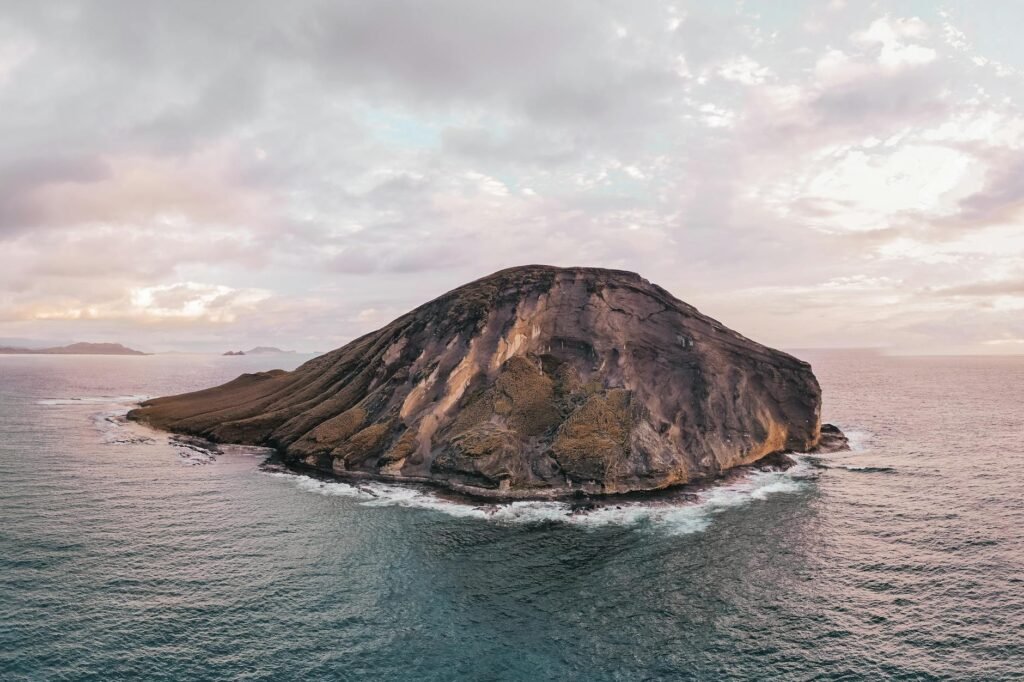
While Okunoshima may charm visitors with its adorable rabbits and haunt them with its wartime history, our next hidden gem offers an entirely different kind of thrill. From living among furry creatures to residing atop explosive forces of nature, we journey to one of Japan’s most extraordinary inhabited locations.
Unique village setting within a volcanic caldera
Nestled in the Philippine Sea lies Aogashima, a remarkable Japanese island that offers perhaps the most unusual living situation in the country a community built inside an active volcano. Despite the inherent risks, approximately 327 residents call this volcanic caldera home, creating a tight-knit community that has persisted for generations.
The island’s dramatic landscape was shaped by its last major eruption in 1785, a catastrophic event that claimed half of the island’s population at the time. Yet remarkably, people returned and rebuilt, with families continuing to embrace island life despite nature’s occasional reminders of its power. The volcano has remained dormant for over 230 years, allowing the community to flourish in this extraordinary setting.
What makes Aogashima truly special is the lush, verdant environment that has developed within this volcanic cradle. The fertile volcanic soil supports abundant vegetation, creating a green paradise within the caldera walls. This stark contrast thriving life within a potentially destructive natural feature makes Aogashima one of Japan’s most fascinating hidden gems.
Traditional hot springs and geothermal cooking
The volcanic nature of Aogashima provides residents with unique benefits that have become integral to daily life. Among the most cherished are the natural hot springs scattered throughout the island. These geothermal features offer both therapeutic relaxation and a gathering place for community members.
Local resident Masanubu Yoshida, who works for the local government, highlights these natural hot springs as one of the many perks of island life. Residents and the occasional adventurous tourists can soak in these mineral-rich waters while contemplating the geological forces bubbling beneath them.
Beyond bathing, the island’s geothermal activity enables traditional cooking methods not commonly found elsewhere in Japan. The volcanic heat provides a natural resource that islanders have ingeniously incorporated into their culinary traditions.
The island also maintains a shochu distillery, producing distinctive spirits with a character that reflects the unique environmental conditions of Aogashima. Along with farming and fishing, these industries form the backbone of the island’s self-sufficient economy, with small local shops providing essentials for daily life.
Getting there: the adventure of accessing this remote island
Reaching Aogashima is an adventure in itself a journey that deters casual tourists but rewards determined travelers with unparalleled experiences. Due to its remote location and challenging weather conditions, transportation to and from the island can be unpredictable.
Most residents rely on cars for transportation around the island, navigating the volcanic terrain and adapting to sometimes difficult weather patterns. Occasional trips to Tokyo provide a stark contrast to island life, with residents like Yoshida appreciating the tranquility of Aogashima compared to the congestion of mainland Japan.
For visitors willing to make the journey, Aogashima offers remarkable recreational opportunities, including fishing, hiking along volcanic ridges, and immersing in natural hot springs all while experiencing the unique perspective of life inside an active volcano. The Japan Meteorological Agency continues to monitor the volcano, reporting no significant activity in recent years, which allows both residents and visitors to enjoy this extraordinary landscape with relative peace of mind.
As we leave behind the volcanic wonders of Aogashima, our journey through Japan’s hidden gems continues to another place where geothermal activity creates unique experiences. Next, we’ll explore Kinosaki Onsen, where rather than living within a volcano, visitors can experience the therapeutic benefits of volcanic waters in Japan’s ultimate traditional hot spring experience.
Kinosaki Onsen: The Ultimate Traditional Hot Spring Experience
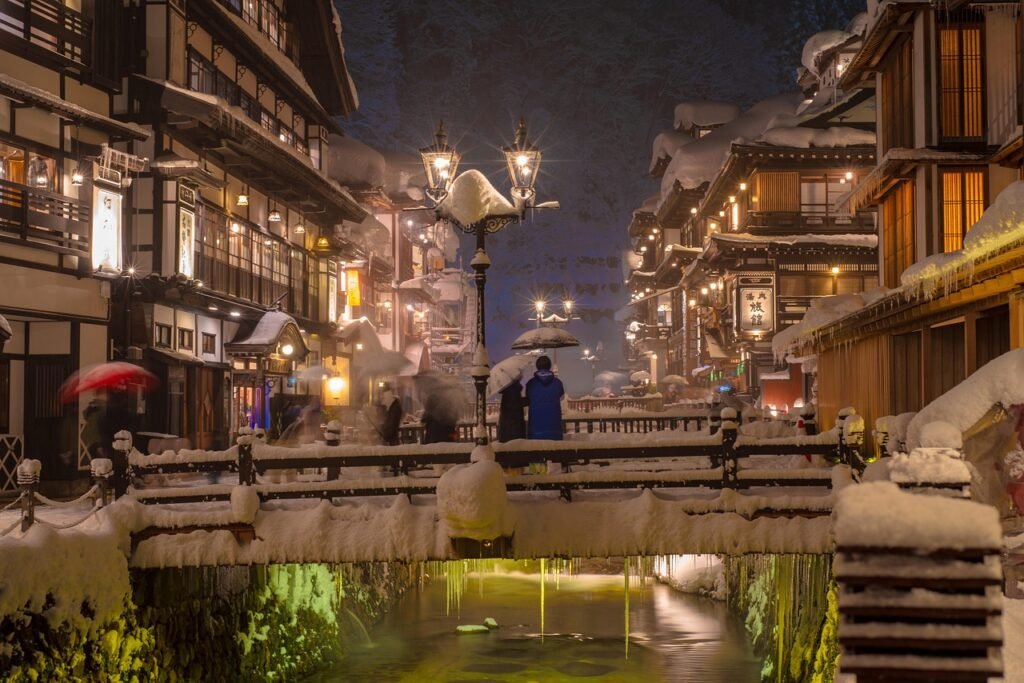
After exploring the volcanic wonders of Aogashima, it’s time to unwind in one of Japan’s most serene hidden gems. Nestled in the scenic Japanese countryside, Kinosaki Onsen offers the quintessential traditional hot spring experience that stands in peaceful contrast to the active volcano lifestyle we just witnessed.
Seven Distinctive Public Bathhouses to Explore
Kinosaki Onsen’s charm centers around its seven public bathhouses, each with unique therapeutic properties and architectural character. Visitors can partake in the centuries-old tradition of “onsen-hopping” (or bath-hopping as locals call it), moving from one bathhouse to another to experience their distinctive healing properties. Each bathhouse is within walking distance of the town center, creating a perfect pathway for relaxation seekers to follow at their leisure.
The public onsens range from rustic traditional structures to more modern facilities, all maintaining the authentic Japanese bathing culture. Many visitors purchase a special onsen pass that grants access to all seven bathhouses, allowing them to fully immerse themselves in this therapeutic tradition throughout their stay.
Ryokan Stays and Yukata Strolls
The true Kinosaki experience involves staying at one of the town’s distinguished ryokans (traditional Japanese inns). These accommodations range from luxurious 5-star establishments to more budget-friendly options, all offering authentic Japanese hospitality.
Premium ryokans like Morizuya and Nishimuraya Honkan provide spacious rooms with exceptional service and both public and private onsen access. The historic Nishimuraya Honkan, one of the oldest ryokans in the area, features stunning gardens and luxurious accommodations with open-air bath options. For those seeking more affordable experiences, Mikuniya and Hanakouji Saigetsu offer authentic stays without sacrificing quality.
A distinctive feature of Kinosaki is the sight of visitors strolling through town in yukata (light cotton kimonos) and geta (wooden sandals) provided by their ryokans. These evening walks between bathhouses, with the gentle clacking of wooden sandals against stone pathways, embody the peaceful rhythm of traditional Japanese onsen culture.
Most ryokans also serve exquisite kaiseki dinners multi-course meals featuring seasonal local ingredients. Establishments like Yuraku Kinosaki Spa and Gardens are particularly noted for their exceptional dining experiences, where meals are often served in-room or in dedicated dining halls.
Seasonal Attractions Beyond the Baths
While the hot springs remain Kinosaki’s main draw, the town offers seasonal delights throughout the year. In spring, cherry blossoms transform the canal-lined streets into corridors of pink and white. Summer brings vibrant festivals and the opportunity to enjoy nearby beaches. Fall paints the surrounding mountains in spectacular autumn colors, while winter offers a magical snow-covered landscape with nearby skiing opportunities, particularly mentioned as an activity available to guests of Ryokan Tsubakino.
Beyond seasonal beauty, visitors can explore unique experiences like sampling sake at Kinosaki Yamamotoya’s on-site brewery or enjoying wellness services such as massages at Onishiya Suishoen. The town’s picturesque setting between mountains and sea also provides opportunities for nature walks and scenic cable car rides to nearby mountain viewpoints.
As we leave the therapeutic waters of Kinosaki Onsen behind, our journey through Japan’s hidden gems continues to Tomonoura, a charming port town whose timeless beauty captivated the imagination of Studio Ghibli’s celebrated animators. This transition from healing waters to creative inspiration showcases the diverse experiences Japan’s lesser-known destinations offer to intrepid travelers.
Tomonoura: The Port Town That Inspired Studio Ghibli
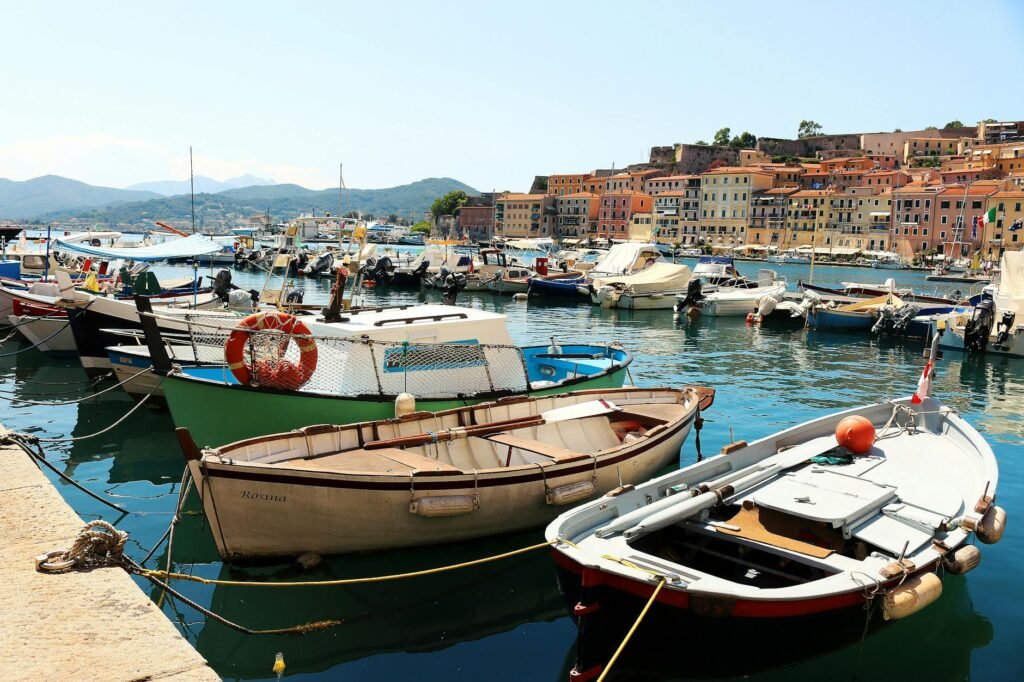
Now that we’ve explored the tranquil hot spring paradise of Kinosaki Onsen, let’s journey to another hidden gem that offers a different kind of enchantment. Located about 100 kilometers east of Hiroshima, the charming fishing town of Tomonoura often escapes the notice of international travelers despite its remarkable cultural significance and timeless beauty.
Picturesque Harbor Views and Sunset Spots
Tomonoura captivates visitors with its quintessential Japanese coastal scenery, featuring a quaint bay area characterized by narrow alleys and rustic wooden houses that evoke the essence of old Japan. The town’s most iconic landmark is the Jōyatō Lighthouse, an 11-meter structure that has guided vessels through the Seto Inland Sea for over 160 years. Today, this historic lighthouse serves as a popular photo spot for visitors seeking to capture the town’s maritime heritage.
For those in search of breathtaking panoramic views, Fukuzenji Temple offers an unmatched perspective of the bay and its scattered islands. This sacred site holds historical significance as a place where Korean envoys stayed during the 17th century. As the sun begins to set, the harbor transforms into a canvas of golden hues reflecting off the calm waters, creating a scene of remarkable tranquility that photographers and romantics alike will treasure.
Another spectacular vantage point can be found on nearby Sensuijima Island, accessible via a short ferry ride from the port. The island is renowned for its pristine natural beauty and offers hiking trails that lead to elevated viewpoints overlooking the entire bay area and beyond.
Connection to Hayao Miyazaki’s “Ponyo”
What truly put Tomonoura on the map for many international visitors is its connection to the celebrated Studio Ghibli film “Ponyo.” The legendary director Hayao Miyazaki was so enamored with this picturesque port town that he spent months here developing his animated masterpiece, using the local scenery as direct inspiration for the film’s setting.
As you wander through the cobblestone streets and observe the traditional wooden buildings, you’ll immediately recognize the visual elements that inspired the fictional coastal town in “Ponyo.” Fans of the film can discover a whimsical Ponyo fountain hidden along one of the narrow alleys, adding a touch of magic to their exploration.
The historic Onfunayado Iroha, a traditional house renovated with design elements influenced by Miyazaki himself, stands as another testament to the deep connection between this town and the beloved film. For the full Ghibli experience, visitors can enjoy the same stunning views that captivated the master animator from Taichoro at Fukuzenji Temple, gazing out at the islands dotting the Seto Inland Sea.
Sampling the Famous Medicinal Liquor
No visit to Tomonoura would be complete without sampling its most distinctive local product: hōmeishu, a medicinal liquor made from 16 different herbs. This traditional tonic has been produced in the town for generations and is highly praised for its health benefits.
Several local shops offer tastings of this unique concoction, allowing visitors to experience its complex flavor profile while learning about its historical significance and purported healing properties. The liquor makes for an excellent souvenir that embodies the essence of this hidden Japanese treasure.
Beyond this special beverage, Tomonoura offers exceptional culinary experiences centered around the bounty of the sea. At restaurants like Chitose, visitors can enjoy fresh sea bream prepared in various traditional methods. For a sweet treat after exploring the town, the café Shionone serves refreshing soft serve ice cream that can be enjoyed while taking in views of the bustling port.
To reach this hidden gem, travelers can take a shinkansen from Hiroshima to Fukuyama, followed by a direct bus ride to Tomonoura. The journey itself offers glimpses of the beautiful Japanese countryside before revealing the historic port town.
With its rich blend of cultural significance, natural beauty, and literary connections, Tomonoura represents one of Japan’s most captivating off-the-beaten-path destinations. As we prepare to leave this enchanting port town behind, our journey through Japan’s hidden gems continues to Yoro Park, where we’ll discover how art and nature intertwine in perfect harmony to create yet another unique Japanese experience.
Yoro Park: Art and Nature in Perfect Harmony
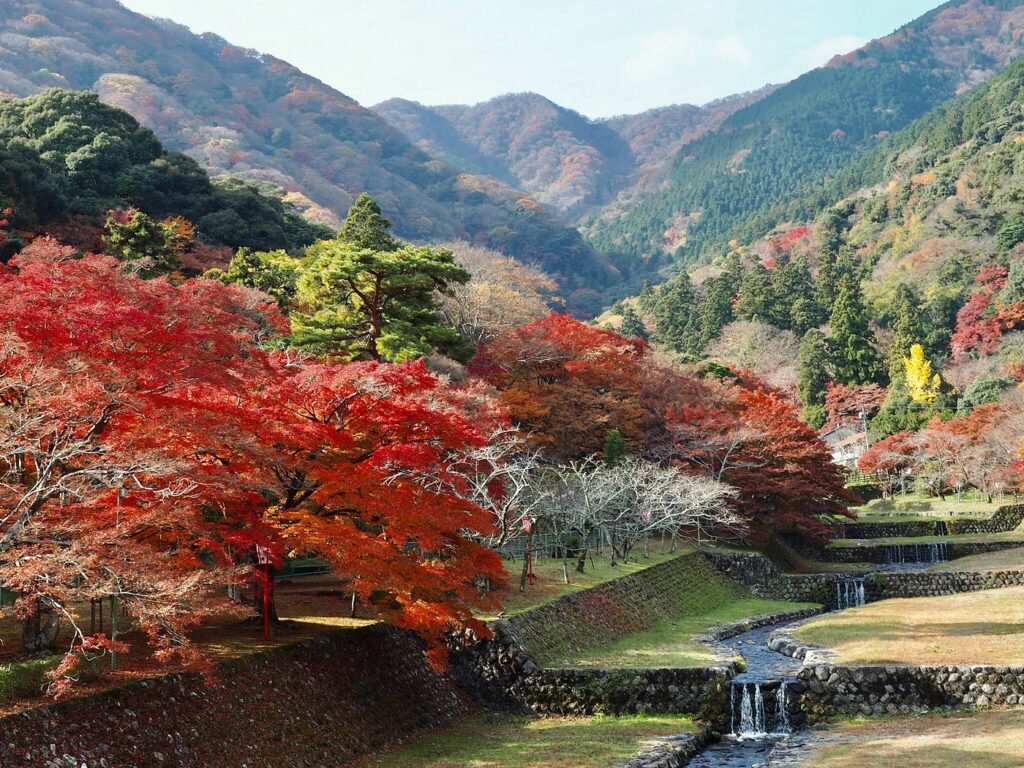
After exploring the charming port town of Tomonoura with its Studio Ghibli connections, we now turn our attention to our final hidden gem a place where art and nature create an extraordinary experience unlike anywhere else in Japan.
Nestled in Gifu Prefecture, Yoro Park represents one of Japan’s most unexpected treasures, combining natural beauty with mind-bending artistic installations. This unique destination offers visitors a chance to experience Japan’s natural landscape through an entirely different perspective.
The Mind-Bending “Site of Reversible Destiny” Installation
At the heart of Yoro Park lies the fascinating “Site of Reversible Destiny,” a surreal art installation that challenges your perception and balance. Created by artists Shusaku Arakawa and Madeline Gins, this immersive experiential art park invites visitors to explore a landscape designed to disorient and awaken the senses.
The installation features undulating floors, mazes, and oddly-angled structures that create a physically challenging environment deliberately designed to make visitors reconsider their relationship with space. As you navigate through colorful concrete structures with names like “Critical Resemblance House” and “Destiny House,” you’ll find yourself questioning your own sense of balance and orientation.
This thought-provoking attraction stands as one of Japan’s most unique artistic experiences, drawing visitors who seek something beyond the traditional temples and gardens. The installation represents a perfect hidden gem for those exploring off the beaten path Japan destinations.
Majestic Yoro Waterfall and Surrounding Nature
Beyond its artistic offerings, Yoro Park is home to the spectacular Yoro Waterfall, a natural wonder that has inspired visitors for centuries. The waterfall drops 32 meters through lush forest surroundings, creating a serene atmosphere that contrasts beautifully with the park’s more conceptual spaces.
The waterfall area provides excellent hiking opportunities through pristine Japanese forest landscapes. Well-maintained trails allow visitors to experience the natural beauty of the region at different vantage points. During spring, cherry blossoms frame the cascading waters, while autumn transforms the surrounding forest into vibrant shades of red and gold.
The natural areas of Yoro Park represent the quieter side of this unique Japanese hidden destination, offering tranquil spaces for reflection amid the artistic innovation found elsewhere in the park.
Family-Friendly Activities Throughout the Seasons
Yoro Park excels as a destination that offers something for every season and visitor. Families particularly appreciate the variety of activities available year-round:
Spring: Cherry blossom viewing around the waterfall creates magical photo opportunities, while seasonal festivals celebrate the arrival of warmer weather.
Summer: The park offers relief from Japan’s humid summer with shaded woodland walks and cooling mist from the waterfall. Evening illuminations transform the art installations into magical nighttime experiences.
Autumn: Fall foliage tours showcase the stunning transformation of the forest, while harvest-themed activities entertain younger visitors.
Winter: Though less visited during colder months, the park takes on a serene quality with occasional light snowfall creating a pristine landscape.
Children especially enjoy the playful nature of the Site of Reversible Destiny, where crawling through tunnels and navigating unusual spaces becomes an adventure rather than simply viewing art. The park’s design encourages physical interaction, making it an excellent stop for families looking to break up the more formal sightseeing typically associated with Japanese tourism.
For visitors seeking unique places to visit in Japan, Yoro Park represents the perfect conclusion to our exploration of Japan’s hidden gems a destination that perfectly balances natural beauty with artistic innovation, traditional landscapes with contemporary vision.
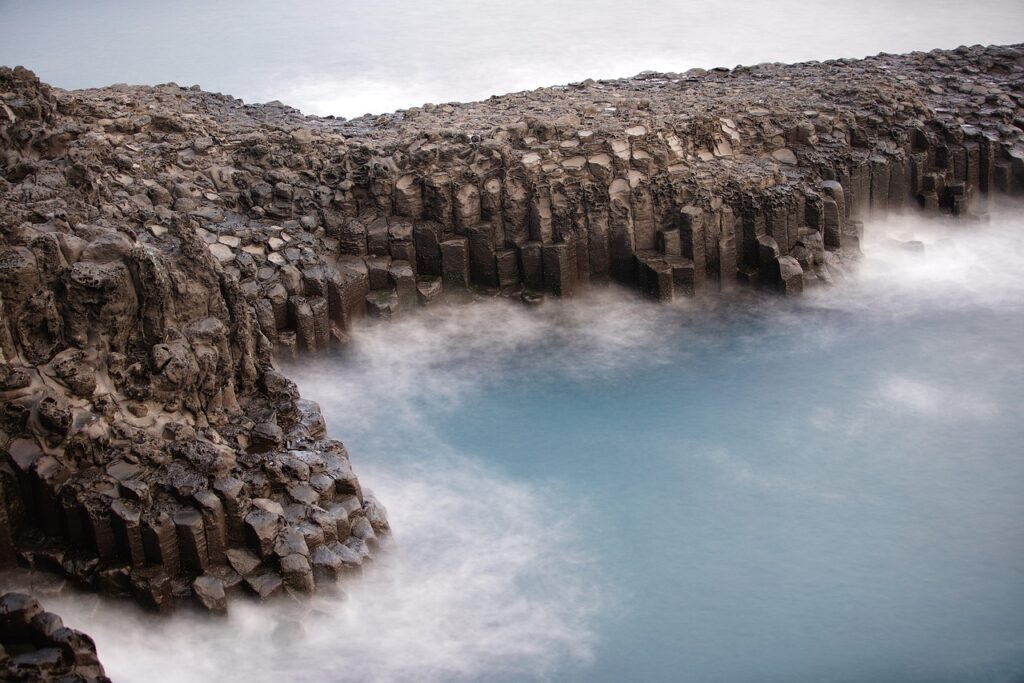
Japan’s hidden treasures await those willing to venture beyond the well-trodden tourist paths. From the mythological beauty of Takachiho Gorge to the artistic harmony of Yoro Park, these ten destinations showcase the extraordinary diversity of experiences Japan has to offer. Whether it’s stepping back in time at Edo-period Ouchi-juku, marveling at the unexpected desert landscape of Tottori Sand Dunes, or finding tranquility in the UNESCO-protected beech forests of Shirakami Sanchi, each location tells its own unique story of Japan’s natural wonders and cultural heritage.
As you plan your next Japanese adventure, consider adding these lesser-known gems to your itinerary. The charming yet haunting Rabbit Island of Okunoshima, the traditional hot spring experience of Kinosaki Onsen, and the Ghibli-inspiring port town of Tomonoura all offer authentic experiences far from the crowds of Tokyo and Kyoto. These destinations reveal a Japan that many travelers never see – one of volcanic islands, historic villages, pristine nature, and artistic innovation. By exploring these hidden corners of this fascinating country, you’ll discover the true depth and richness of Japanese culture that makes it one of the world’s most rewarding travel destinations.
